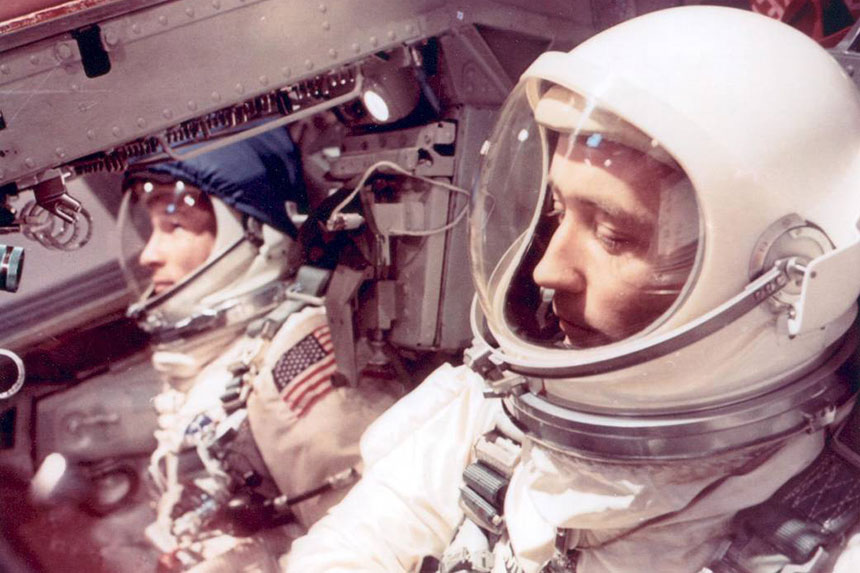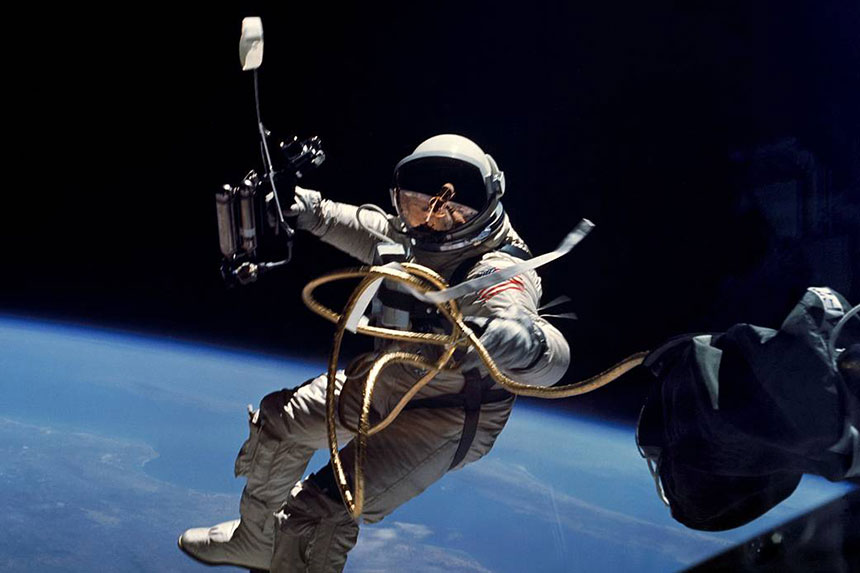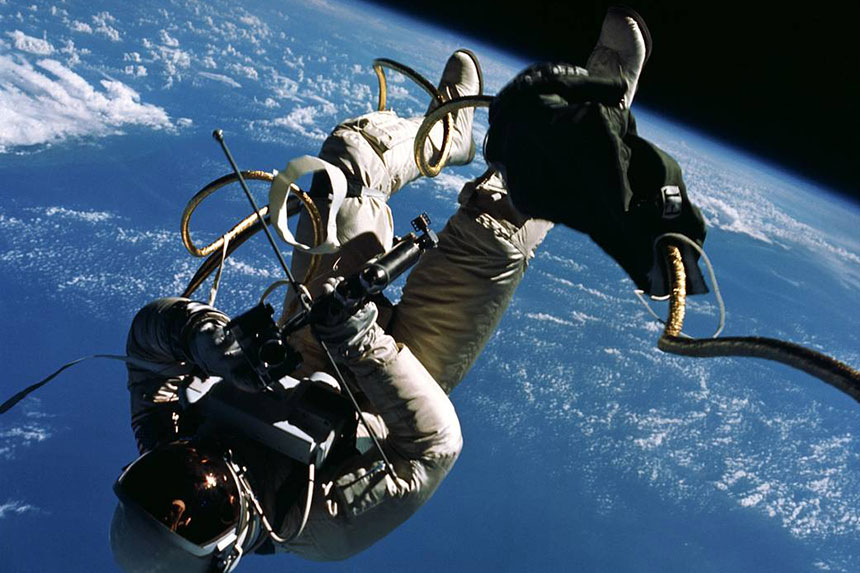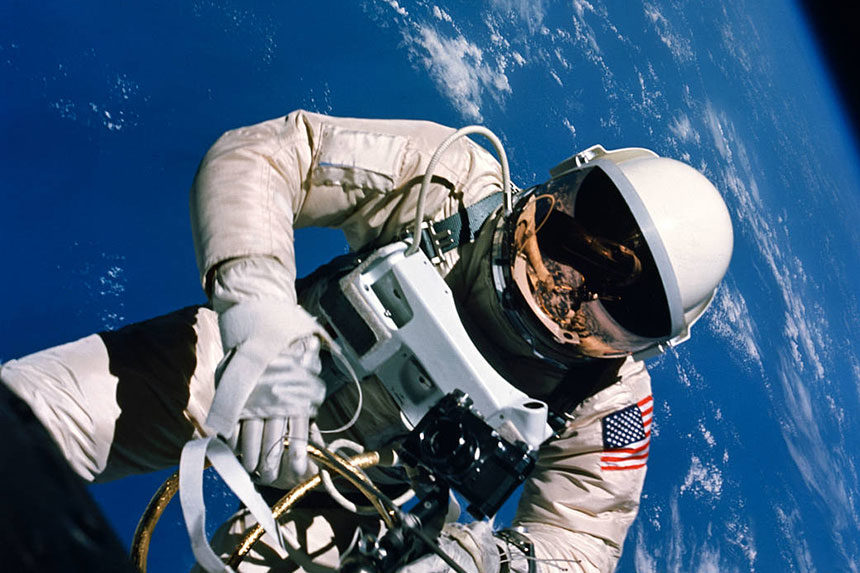In 36 short years, Ed White lived a life of adventure and distinction. A West Point grad, an aeronautical engineer, a fighter pilot, and a test pilot, White pushed himself toward the goal of becoming one of America’s astronauts. While serving as Pilot of Gemini IV, White managed to take his exceptional and pioneering life one step further by becoming the first American to conduct a spacewalk.
Ed White had flight in his blood. His father was a U.S. Air Force major general who took Ed up in a T-6 training craft when the boy was 12; he even allowed Ed to take the controls. That was it for the younger White; as he told Newsweek in 1965, the act of flying “felt like the most natural thing in the world to do.” White later went to West Point where he excelled as an athlete; he missed making the 1952 U.S. Olympic Team in hurdles by fractions of a second. After graduating West Point, he entered the Air Force.
White earned his flight wings by 1953. While at the 22nd Fighter Day Squadron in West Germany, he flew NATO missions in both the F-86 and F-100 Sabre squadrons. In 1957, while learning about America’s nascent space program, White decided to become an astronaut. To pursue that, he earned an aeronautical engineering degree at the University of Michigan and followed that up by earning his test pilot credentials at USAF Test Pilot School at Edwards Air Force Base. White was one of the pilots who flew planes to simulate weightlessness. Eventually becoming a Lieutenant Colonel, White was chosen for the second group of astronauts in 1962.

The second series of manned NASA missions was Gemini, and White was selected as pilot for Gemini IV; he would be flying with Command Pilot James McDivitt. The four-day mission began with a launch on June 3, 1965. The flight would be attempting two firsts: the first space rendezvous between two crafts and the first Extra-Vehicular Activity, more commonly known as an EVA or spacewalk. The Soviet space program had pulled off an EVA earlier in the year, and NASA was eager to do it better. On the mission’s first orbit after reaching space, Gemini IV attempted to reconnect with the Titan II rocket that had provided the spacecraft’s lift-off. Unfortunately, they were not able to make the rendezvous and that action was abandoned.

As the craft continued to circle the Earth, White prepared for his spacewalk. White exited the vehicle, connected to the ship by a tether. For moving about, he used a Hand-Held Maneuvering Unit, which expelled bursts of air to push him around in weightlessness. The 20-minute session was widely hailed as a success and paved the way for more regular usage of EVAs through the Gemini program and beyond. White and McDivitt also conducted a number of experiments during the mission, including the measurement of radiation in the craft. Although the mission was shooting for five days, a computer failure forced them to return to Earth a day early. Nevertheless, it was an overall success and pictures of White’s spacewalk were seen around the world.

Sadly, the story of Ed White has a tragic coda. White was selected to fly on Apollo I with Virgil “Gus” Grissom and Roger Chaffee. During a test in the Apollo capsule on Launch Pad 34 at Cape Kennedy on January 27, 1967, a spark caused a fire. In the oxygen-rich environment of the sealed capsule, the blaze was almost instantly lethal. All three astronauts were killed. White was interred at West Point Cemetery; over the years, he posthumously received a number of honors, including the Congressional Space Medal of Honor.
Today, EVAs occur as a matter of course in space operations. The work done by White led to a two-hour spacewalk by Buzz Aldrin later in the Gemini program. Astronauts now use a variety of sophisticated equipment, such as the jet-pack-like Manned Maneuvering Units, to execute these operations. The longest spacewalk on record occurred in 2001 when Americans Jim Voss and Susan Helms went EVA for just under nine hours. Ed White’s spacewalk made him a trailblazer, but his exceptional life of committed service made him an American hero.
Featured image: Ed White makes his historic spacewalk. (NASA.gov)
Become a Saturday Evening Post member and enjoy unlimited access. Subscribe now




Comments
RIP, Hero ♡